Research Overview
Prof. Craig's interests include the development and application of new modelling approaches for addressing difficult environmental/water resources problems in both surface water and groundwater systems. He and his research group are invested in making these tools and techniques accessible and useful to consultants, educators, and regulators.
When used correctly, hydrological models can inform policy makers, increase our understanding of complex systems, and help predict the effects of man's efforts to clean up pollution, use our available water resources, and adapt to climate change. Prof. Craig and his research group work both to improve the science of hydrologic modelling and, as a nod to basic curiosity-driven research, ambitiously push the boundaries of what is possible using analytical and semi-analytical methods. We also have a lot of fun.
Research Areas
Robust modelling and upscaling of hydrologic phenomena
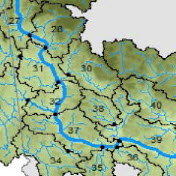
Surface water models are expected to successfully simulate the interaction of a variety of complicated processes at large scales in a computationally efficient manner. Prof. Craig and his students are investigating how to use distribution-based approaches to successfully model a variety of phenomena at mixed spatial scales and developing approaches for decreasing model structural uncertainty.
His research group also leads development of the flexible hydrologic modelling framework, Raven, which can be used to examine the impacts of modelling decisions on model output.
Discontinuous permafrost hydrology
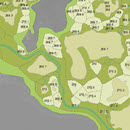
Regions underlain by discontinuous permafrost, such as those found in the Taiga plains of Northern Canada, are some of the most climate-change sensitive landscapes on earth. Working closesy with hydrologist Bill Quinton of Wilfrid Laurier University, Prof. Craig's research group aims to understand the long-term trajectory of hydrologic landscape change in these areas through a combination of modelling and fieldwork. We also aim to improve the capabilities of numerical models to simulate the complex hydrology of permafrost regions at regional scales, and to better understand the hydrologic cycle on these landscapes.
Novel semi-analytical techniques for simulating saturated and unsaturated groundwater flow
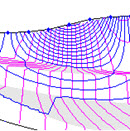
Semi-analytical series solution and analytic element approaches are underappreciated and underinvestigated mathematical methods for simulating a wide range of phenomena in fluid flow, soil, and solid mechanics. The methods can handle complex system geometry without internal discretization, improve with decreasing aspect ratio of the model domain, and provide solutions with near-spectral accuracy. They can also be used for novel applications such as particle tracking on unstructured grids.
Research Team
Prof. Craig works closely with the Waterloo hydrologic modelling research group, which includes the collective research teams of Dr. Bryan Tolson and Dr. John Quilty. He also regularly collaborates with the research team of Dr. William Quinton at the Cold Regions Research Centre at Wilfrid Laurier University.
MASc., Water Resources Engineering, University of Tehran
Research Area: Model structural uncertainty
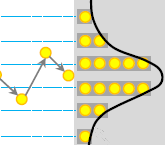

MASc. Environmental Engineering, University of California, Berkeley; B.Sc. Aerospace Engineering, University of California San Diego

Ph.D., Civil and Environmental Engineering, Tokyo Institute of Technology, M.Eng. Civil Engineering, Tokyo Institute of Technology;
Research Topics: Hydrological modelling, Remote sensing, Data assimilation, Flood mapping

Ph.D., Polytechnic University of Valencia, M.Sc. Hydrosystems, Pontificia Universidad Javeriana;
Research Topic: Model uncertainty analysis and wildfire impacts


B.Sc. Environmental Engineering, University of Waterloo

MASc. Water Resource Engineering, University of Tehran; B.Sc. Civil Engineering, University of Tehran
Team Photos

The annual Holiday party, Waterloo, 2023. Left to Right: Bryan Tolson, Rezgar Arabzadeh, Hannah Burdett, Rojin Meysami, James Craig, Menaka Revel, Rob Chlumsky, Jonathan Romero-Cuellar, Glen Yu, Hongren Shen, and Bohao Tang.
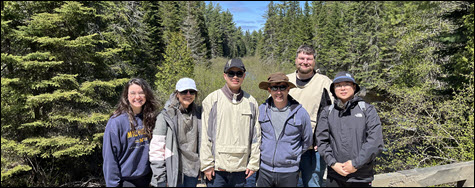
Visit to MNRF Research sites at the Harkness Research Station, ON, 2023. Left to Right: Hannah Burdett, Rojin Meysami, Hongren Shen, Bryan Tolson, James Craig, and Glen Yu. Not sure who let these guys out of the computer lab.

The annual Christmas secret santa, Waterloo, 2019. Left to Right: Élise Devoie, Mahkameh Taheri, Hongren Shen, Dandan Shen, Mark Ranjram, James Craig, Leland Scantlebury, Bryan Tolson, Ming Han, Erfan Amiri, Shaghayegh Akbarpour.

The annual research group BBQ, Waterloo, Summer 2017. Left to Right: Élise Devoie, Sarah Grass, Rob Chlumsky, Mark Ranjram, James Craig, Mahyar Shafii, Konhee Lee, Erfan Amiri, Juliane Mai.
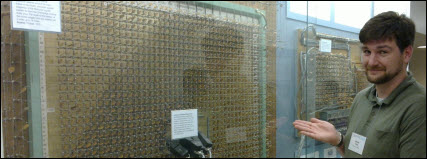
Me posing with a three-dimensional groundwater analog model at the Illinois Water Survey HQ, June 2012. Each node of the 'computational' grid was soldered together by hand, yet even back in 1964 they managed to use multigrid methods, variable pumping rates, and flexible far-field conditions. It just took a bit longer. This is is just about one of the only tangible historical artifacts in the field of groundwater modelling.
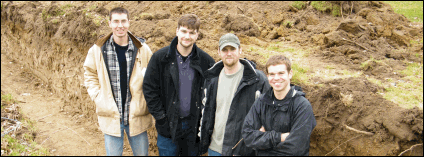
At our geoexchange monitoring site during system installation. Guelph, Nov 2010.
Left to Right: Richard Simms, James Craig, Dave Broderecht (from NextEnergy), Simon Haslam

Computational hydrology researchers pretending to be field savvy. Yukon, Nov 2008.
Left to Right: Lucy Liu, Angela MacLean, Andy Snowdon, Frank Seglenieks, James Craig;
Bottom: Carol Soulis, Kaitlyn McIntyre, Bryan Tolson
Research Group Alumni
PhD students
- Shaghayegh Akbarpour, Ph.D.
- Ali Ameli, Ph.D.
- Hannah Burdett, Ph.D.
- Rob Chlumsky, Ph.D. (Co-supervised with Prof. Bryan Tolson)
- Élise Devoie Ph.D.
-
Lucy (Guoxiang) Liu, Ph.D. (Co-supervised with Prof. Ric Soulis)
- Thesis Title: "Improved interflow and infiltration algorithms for distributed hydrological models"
-
Tussanee Nettasana, Ph.D.
(Co-supervised with Prof. Bryan Tolson)
- Thesis Title: "Conceptual model uncertainty in the management of the Chi River Basin, Thailand"
- Mark Ranjram, Ph.D.
- Andy Snowdon, Ph.D.
-
Mahkameh Taheri, Ph.D.
- Thesis Title: "Upscaling fill-and-spill hydrologic processes"
MASc students
- Genevieve Brown, M.A.Sc.
- Rob Chlumsky, M.A.Sc.
- Mashrur Chowdhury, M.A.Sc.
-
Cameron Dunning, M.A.Sc.
(Co-supervised with Prof. Ric Soulis)
- Thesis Title : "Hydrological modeling of the Upper South Saskatchewan River basin: Multi-basin calibration and gauge de-clustering analysis"
- Sarah Grass, M.A.Sc.
-
Simon Haslam, M.A.Sc.
- Thesis Title: "Informing the practice of ground heat exchanger design through numerical simulations"
-
Chao Huo, M.A.Sc.(Co-supervised with Prof. Neil Thomson)
- Thesis Title : "Mathematical simulation of a dipole delivery system for in situ remediation"
-
Erin L. Jones, M.A.Sc. [Joint with Biology]
(Co-supervised with Prof. Ralph Smith)
- Thesis Title: "Ecological modelling of Lake Erie : Sensitivity analysis and simulation of nutrient, phytoplankton, and zooplankton dynamics"
- Konhee Lee, M.A.Sc. (Co-supervised with Prof. Bryan Tolson)
- Simon Lin, M.A.Sc. (Co-supervised with Prof. Nandita Basu)
-
Dan Princz, M.A.Sc.
(Co-supervised with Prof. Ric Soulis)
- Thesis Title: "Using a model evaluation workflow to investigate the influence of parameter granularity in surface water models"
- Muhammad Ramadhan, M.A.Sc.
- Leland Scantlebury,M.A.Sc. (2021)
-
Philip Sheffield, M.A.Sc.
- Thesis Title: "The utility of using multiple conceptual models for the design of groundwater remediation systems"
-
Richard Simms,M.A.Sc.
- Thesis Title: "The effects of soil heterogeneity on the performance of horizontal ground loop heat exchangers"
- Nicholas Sgro, M.A.Sc.
-
Andy Snowdon, M.A.Sc.
- Thesis Title: "Improved numerical methods for distributed hydrological models"
-
Madeline Tucker, M.A.Sc.
- Thesis Title: Methods for modelling wetlands in hydrologic models"

